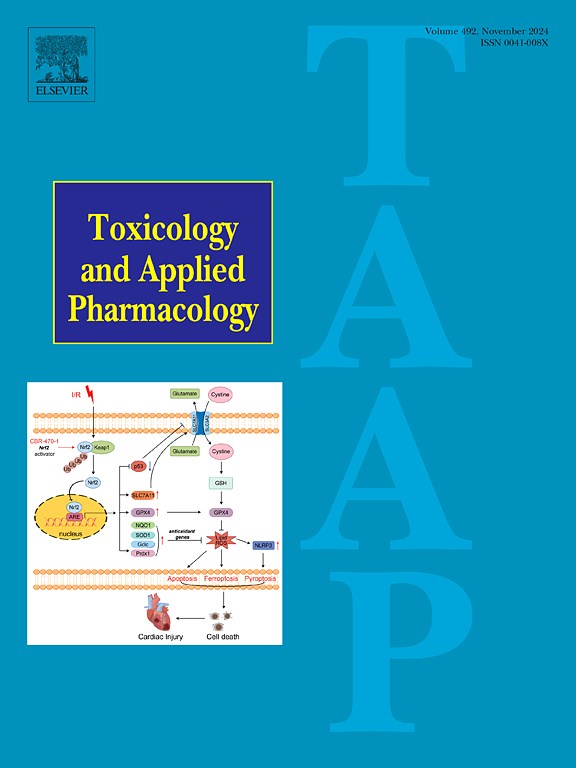The resveratrol attenuates reactive oxygen species mediated DNA damage in cardiac malformations caused by 4-tert-octylphenol
IF 3.3
3区 医学
Q2 PHARMACOLOGY & PHARMACY
引用次数: 0
Abstract
4-tert-octylphenol (4-t-OP) is an alkylphenolic environmental endocrine disruptor extensively distributed in the environment, posing potential hazards to living organisms. Research has demonstrated that 4-t-OP induces cardiac injury and abnormalities in embryonic development, which can adversely affect heart development. The excessive production of reactive oxygen species (ROS) triggered by 4-t-OP may result in DNA damage. Hence, we hypothesized that ROS-mediated DNA damage plays a crucial role in abnormal cardiac development in zebrafish embryos exposed to 4-t-OP, while resveratrol (RSV), a common antioxidant found in natural foods, may provide protection. In this study, we exposed zebrafish embryos at 2 h post-fertilization (hpf) to various doses of 4-t-OP in combination with relevant inhibitor/agonist therapies. Using microscopy, we observed morphological alterations in the cardiac structure of zebrafish embryos at 72 hpf. The underlying molecular mechanisms were assessed through immunofluorescence, DCFH-DA probe, MitoSOX™ staining, Quantitative polymerase chain reaction, and other methods. Our findings revealed that 4-t-OP caused dose-dependent cardiac defects in zebrafish embryos. The overexpression of ROS/mitochondrial ROS (mtROS) induced by 4-t-OP was significantly reduced by the addition of RSV or the ROS inhibitor N-acetyl-L-cysteine (NAC). Furthermore, the inclusion of RSV or NAC significantly mitigated cardiac deformities, cardiac apoptosis, and DNA damage. Additionally, the apoptosis inhibitor Ac-DEVD-CHO and the Wnt/β-catenin agonist CHIR99021 decreased 4-t-OP-induced cardiac abnormalities. Moreover, the naturally occurring small molecule chemical RSV provided protection against 4-t-OP-induced heart developmental injury. This study elucidates the molecular mechanisms by which 4-t-OP induces oxidative stress, DNA damage, and cardiac defects in the heart of zebrafish larvae through the ROS/Wnt/β-catenin signaling pathway. These findings present novel molecular targets for the prevention and therapy of congenital heart disease, as well as enhance our understanding of the cardiotoxic effects of 4-t-OP.
求助全文
约1分钟内获得全文
求助全文
来源期刊
CiteScore
6.80
自引率
2.60%
发文量
309
审稿时长
32 days
期刊介绍:
Toxicology and Applied Pharmacology publishes original scientific research of relevance to animals or humans pertaining to the action of chemicals, drugs, or chemically-defined natural products.
Regular articles address mechanistic approaches to physiological, pharmacologic, biochemical, cellular, or molecular understanding of toxicologic/pathologic lesions and to methods used to describe these responses. Safety Science articles address outstanding state-of-the-art preclinical and human translational characterization of drug and chemical safety employing cutting-edge science. Highly significant Regulatory Safety Science articles will also be considered in this category. Papers concerned with alternatives to the use of experimental animals are encouraged.
Short articles report on high impact studies of broad interest to readers of TAAP that would benefit from rapid publication. These articles should contain no more than a combined total of four figures and tables. Authors should include in their cover letter the justification for consideration of their manuscript as a short article.

 求助内容:
求助内容: 应助结果提醒方式:
应助结果提醒方式:


